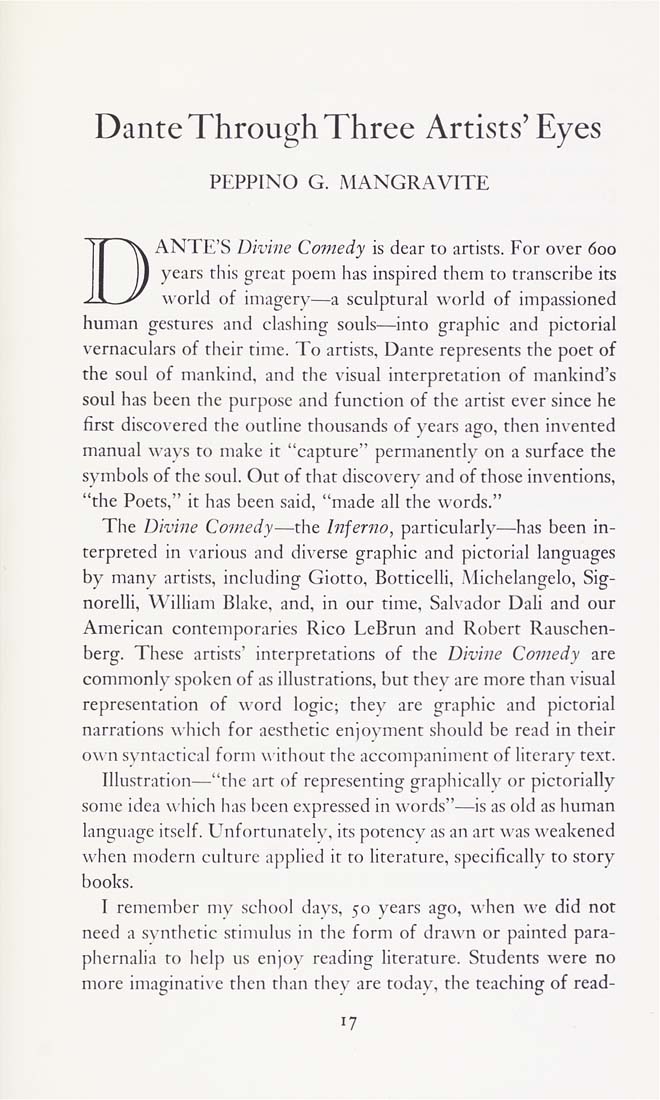Columbia Library columns (v.15(1965Nov-1966May))
(New York : Friends of the Columbia Libraries. )
|
||
|
|
|
|
| v.15,no.1(1965:Nov): Page 17 |

Dante Through Three Artists'Eyes PEPPINO G. MANGRAVITE D' ANTE'S Divine Comedy is dear to artists. For over 600 years this great poem has inspired them to transcribe its world of imagery—a sculptural world of impassioned human gestures and clashing souls—into graphic and pictorial vernaculars of their time. To artists, Dante represents the poet of the soul of mankind, and the visual interpretation of mankind's soul has been the purpose and function of the artist ever since he first disco\'ered the outline thousands of years ago, then invented manual wa\s to make it "capture" permanently on a surface the symbols of the soul. Out of that discovery and of those inventions, "the Poets," it has been said, "made all the words." The Divine Comedy—the Inferjzo, particularly—has been in¬ terpreted in various and diverse graphic and pictorial languages by many artists, including Giotto, Botticelli, Michelangelo, Sig- norelli, William Blake, and, in our time, Salvador Dali and our American contemporaries Rico LeBrun and Robert Rauschen- berg. These artists' interpretations of the Divine Comedy are commonly spoken of as illustrations, but they are more than visual representation of word logic; they are graphic and pictorial narrations which for aesthetic enjoyment should be read in their own syntactical form without the accompaniment of literary text. Illustration—"the art of representing graphically or pictorially some idea w hich has been expressed in words"—is as old as human language itself. Unfortunately, its potency as an art was weakened when modern culture applied it to literature, specifically to story books. I remember my school days, 50 years ago, when we did not need a synthetic stimulus in the form of drawn or painted pata- phernalia to help us enjoy reading literature. Students were no more imaginative then than thev are today, the teaching of read- 17 |
| v.15,no.1(1965:Nov): Page 17 |







